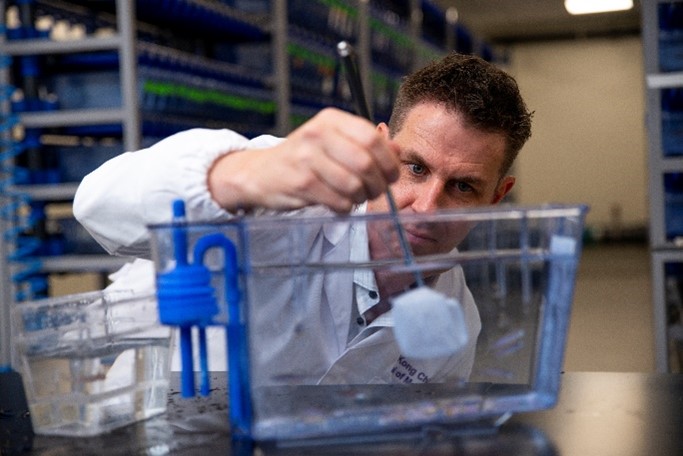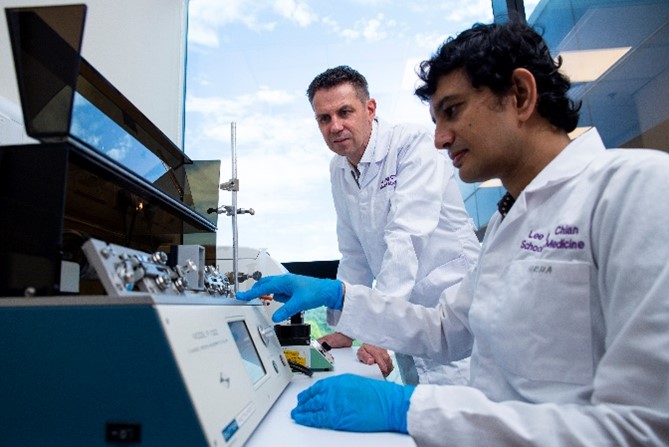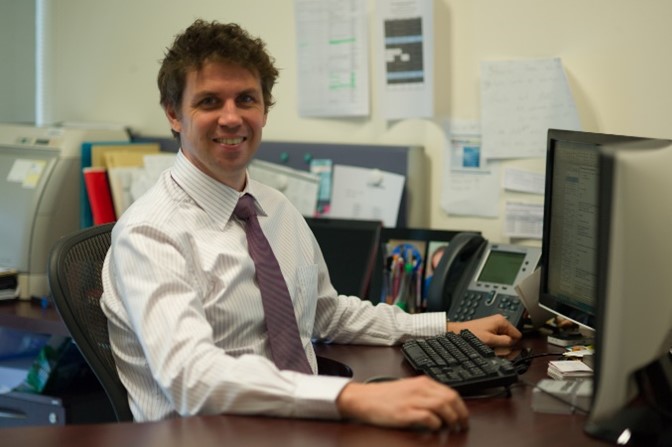Staff Profile: Up Close with Associate Professor Tom James Carney
 | By Edwin Ong, Assistant Director, Branding & Media Communications |
Tom Carney is Associate Professor of Developmental Biology and House Tutor at LKCMedicine, as well as Co-Principal Investigator at the Institute of Molecular and Cell Biology (IMCB, A*STAR). Having been recently promoted to Associate Professor with Tenure, Assoc Prof Carney’s research work on in-vivo genetic and cellular analyses using zebrafish has led to numerous publications in prominent international journals, including Nature, eLife and Nature Neuroscience.
Assoc Prof Carney’s research centres on the developmental processes of derivatives from the non-neural ectoderm, particularly the neural crest and the epidermis. Utilising the zebrafish model for in vivo genetic and cellular studies, his work has been featured in publications in several prestigious international journals, such as Nature, Nature Communications, Current Biology, EMBO Reports, eLife, American Journal of Human Genetics, PLoS Genetics, Development, and Nature Neuroscience.

Tell us about your pioneering research on zebrafish.
This came from an old interest of mine in evolution and generation of structures. We have long been interested in how the human body plan is made. This is a story of both engineering and history - the instructions needed to grow a structure such as a limb, and how did these instructions get refined from earlier models.

One of the earliest models of human limbs are the fins of fish. Zebrafish fins are useful for us to understand the oldest plans of limbs in existence - here we can see the history of the instruction set. We also have a set of zebrafish genetic mutants where there are errors in the instruction set. These same errors are also seen in genetic disorders causing human limb malformations, with largely the same outcomes. One of these errors in both the fish and humans causes brittle bones and recurrent fractures. Another causes cells to become highly invasive, acting like a malignant carcinoma. We have identified how this error leads to inflammatory and invasive carcinomas.

You are also involved in teaching and mentoring our medical students. How has your experience as a House Tutor been?
I am mostly bound by confidentiality to the students, although I can share that there are students with specific problems I would never have predicted in Singapore. There are also students that arrive at the School having overcome significant difficulties in their lives, and do struggle in their first or second year. Some of these students are the most driven and dedicated individuals I have ever met. We have very few students with problems; understandably we do invest more of our time with them.
Sometimes I do attend the House Cup Sports Day – I had to learn the rules to captain’s ball and floorball! I remember getting my shirt ripped off while playing a frisbee game I still don’t quite understand. Doing MMI admission interviews gave me some unexpected moments of mirth. We do have the rare answer from students that is so left field, it is hard to keep a straight face.

How have your contributions enhanced LKCMedicine and the broader scientific community?
Well, it is really more that they have enhanced me. Sitting in on the Assistant Deans’ Meetings for the last year has shown me the complexity of the MBBS curriculum, especially for a school that teaches using Team Based Learning.
Reworking Foundations of Medicine was a big project done with other faculty. It was good to sequence the module, fill gaps and then match teaching requirements to my colleagues’ skills and expertise. That gave a unique overview of the student journey and of course I got to know my colleagues better – quite good fun sometimes!
Setting up the zebrafish facility was enjoyable but not a linear process – the RASS team was exceptional at managing the set-up. Scientifically, I enjoyed helping other schools benefit from the zebrafish facility at our Experimental Medicine Building – you get to see very different science.
How has life been on a personal basis since you moved to Singapore?
I took up running when I got here in 2008, and did a couple of marathons but then my knees complained a lot. Now I do golf sometimes (poorly). I did play a total of two games of cricket and four games of water polo since I arrived. I did get to try my hand at being a Track Marshall at the Singapore F1 race. The best concert I went to was The Stone Roses at the Indoor Stadium in 2012. The worst concert was Bob Dylan (surprisingly) at The Star in 2018. The best surprise concert was Ratatat at Neon Lights in 2015.

What else do you wish to accomplish at LKCMedicine and in life?
Oh, I have a tonne more of limb evolution questions to answer; we still have a poor idea of the genetic programme directing cell morphology during growth of limbs. I have a number of cancer questions I need to follow up on that it would be timely to revive. I would like to expand the zebrafish programme at NTU; the zebrafish facility is such a unique and high-class resource – it is one of the best in the world.
In life? Maybe break my handicap of 85 in golf. I have never seen the Aurora lights, nor been to Scotland. Perhaps I can do all three on one trip.

